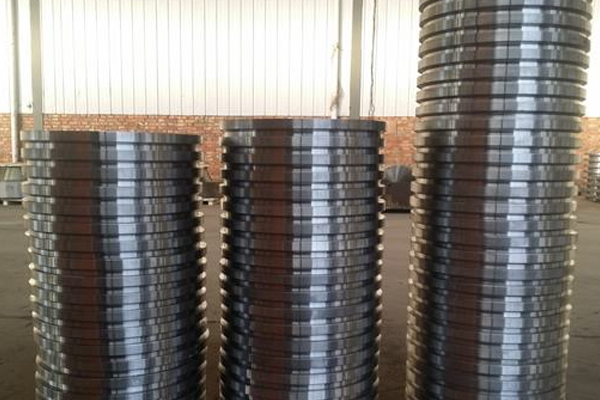Forging of carbon steel flanges in which cold forging is forged at low temperature, the size of the forged flange changes very little. When forging below 700℃, less oxide scale is formed and no decarbonization occurs on the surface. Therefore, as long as the deformation can be within the forming energy range, cold forging is easy to obtain good dimensional accuracy and surface finish. As long as the temperature and lubrication cooling are well controlled, good accuracy can be obtained in warm forging up to 700℃. Cold die forging, cold extrusion, cold heading and other plastic processing collectively. Cold forging is the molding process below the recrystallization temperature of the material, and the forging is carried out below the recovery temperature. In production, the forging of unheated blank is called cold forging. The cold-forged materials are mostly aluminum and some alloys, copper and some alloys, low carbon steel, medium carbon steel and low alloy structural steel with low deformation resistance and good plasticity at room temperature. Cold forgings have good surface quality, high dimensional accuracy and can replace some cutting. Cold forging strengthens the metal and increases the strength of the flange.
The development of cold forging technology is mainly to develop high value-added products, reduce production costs, at the same time, it is also constantly to cutting, powder metallurgy, casting, hot forging, sheet metal forming process and other fields of penetration or replace, can also be combined with these processes to form a composite process.
The hot forging of flanges is: during hot forging, large flanges with complex shapes can be forged because the deformation energy and deformation resistance are very small. For high dimensional precision flanges, hot forging is available in the 900-1000℃ temperature range. In addition, attention should be paid to improving the working environment of hot forging. Forging die life (hot forging 2-5 thousand, warm forging 10-20 thousand, cold forging 20-50 thousand) is shorter than other temperature region forging, but it has a large degree of freedom, low cost. The purpose of hot forging flange is mainly to reduce the deformation resistance of metal, so as to reduce the bad material deformation required forging pressure, so that the tonnage of forging equipment is greatly reduced; In the process of hot forging, the coarse structure of the steel ingot is changed into a new structure with fine grains through recrystallization, and the defects of the structure are reduced and the mechanical properties of the steel are improved.
Post time: Aug-12-2021

